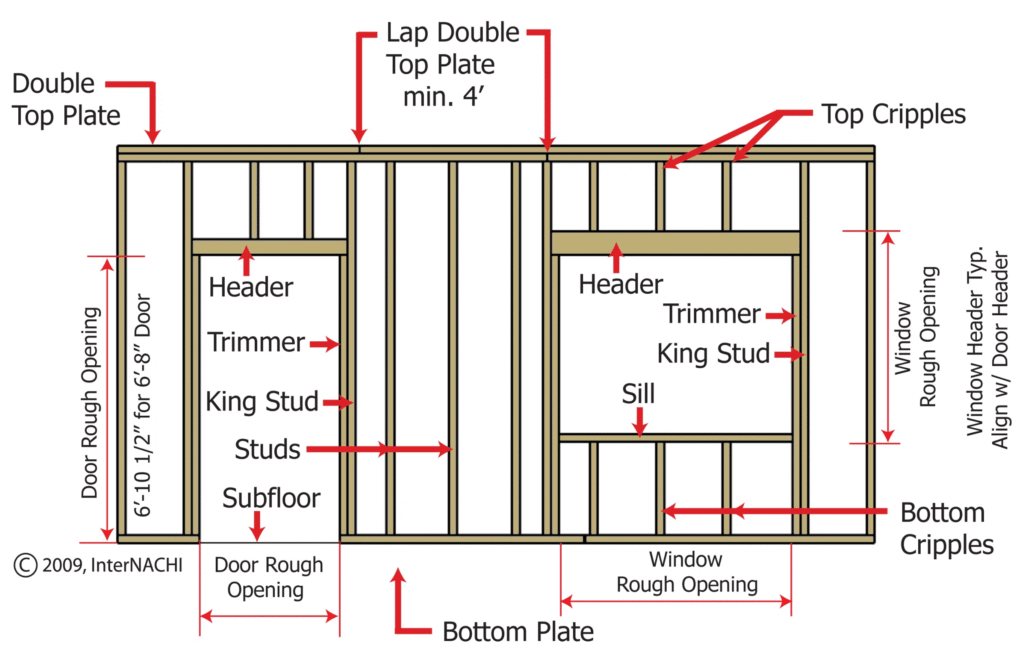About Us
Empowerment through education.
At Envision our goal is to provide valuable information, educating you on your home purchase.
Click through the tabs below to learn about popular home topics
There are many types and configurations of exhaust systems. The type of exhaust should be chosen based off the fuel being burned. For example a wood burning fireplace required a type A exhaust. Type A can be a masonry chimney with a clay flue or high quality stainless steel. Each type of exhaust system has different standards and heat thresholds. This is just one of the many reasons why its important to hire a home inspector.



Brick veneer is a construction technique where a single layer of brick is used as an exterior finish over a non-brick structural wall. Unlike a solid brick wall, which is load-bearing and forms the main structural component of the building, a brick veneer wall is primarily decorative and is attached to the structural framework of the building.



EFIS (Exterior insulation finishing system) often called synthetic stucco, is a multilayered exterior cladding system that also provides insulating value. These systems are most popular in commercial structures but have been gaining popularity in the residential sector. EFIS systems are versatile and can be shaped to look like many other cladding systems. Although EFIS has some great qualities that make it better then traditional stucco, there are some drawbacks. Moisture can get trapped between the layers and cause mold or mildew to form. Also EFIS is relatively fragile and can be damaged from debris impact during a wind storm.



There are many types of HVAC systems but the two most popular are the split system furnace and the heat pump. Both these systems circulate Hot or cold air throughout the home Via air ducts. The Biggest difference between the two is how the heat setting works. In a furnace, there is usually a natural gas piolet flame in the heat exchanger warming the air as it passes though. In a Heat pump the A/C system works in reverse to heat the supply air.


Over 3,000 products contain Asbestos! If your home was built before 1970 it is extremely likely your home contains asbestos. However there is no true cut off year. Below is a example of 9 by 9 asbestos flooring and siding.


There are many types and configurations of septic systems. In New Jersey engineers design a system custom tailored to the property and its unique characteristics. The plans are then executed by a contractor. The city keeps records of the plans. Pulling these records and inspecting the septic falls outside the scope of a home inspection. If you are purchasing a home with a septic tank we recommend you have a septic tank inspection done before closing.
The U.S. Forest Service has identified 15 conditions that frequently lead to termite infestation:
1- Wooden fences, trellises and other wooden adornments up against the side of a structure may provide termite access.
2- Cracks in concrete foundations and open voids in concrete foundations are hidden avenues of entry.
3- Any wooden posts or supports set in concrete may be in contact with the soil underneath.
4- Concrete porches with earth fill may provide wood-to-soil contact.
5-Form boards left in place contribute to the termite food supply.
6- Leaking pipes and dripping faucets in the crawlspace keep the soil under the structure damp.
7- Blocking crawlspace vents with shrubbery will cause the air under the structure to remain warm and humid.
8- Construction debris in the backfill beside the structure contribute to the termites’ food supply.
9- Low foundation walls and footings provide wood-to-soil contact.
10- Stucco or brick veneer carried down over the concrete foundation allows for hidden access to the structure.
11- Soil-filled planters built up against the side of a structure allow direct access into foundation cracks.
12- Forms left in slabs where plumbing drains enter the structure provide access.
13- Wooden porch steps in contact with the soil are potential entry points.
14- A heating unit in a crawlspace maintains warm soil conditions for termite colonies year-round.
15- Paper is a wood product. Paper collars around pipes and ducts also provide access to the structure.
There are many ways to frame a wall. All framing should match the architectural plans of the home. below is a basic framing diagram.

Home Inspection Process
Meet Our Founder



Nico Bianco
Home Inspector License- 24GI00249400
Radon Measurement Technician License – MET15834
WDO-NJ # cc100036
Nico’s fascination with structures and building construction was evident from an early age spending countless hours building Lego creations. This childhood passion blossomed into a lifelong commitment to understanding the intricacies of homes, from the foundation to the roof. With so much to learn Nico enrolled in The Nj Academy Of Home Inspectors where he got a breakdown of all the trades in grave detail. Now he Serves the New Jersey community protecting home buyers by educating them on their new home purchase.


Check out our Google reviews below!
Follow us on Facebook!!
